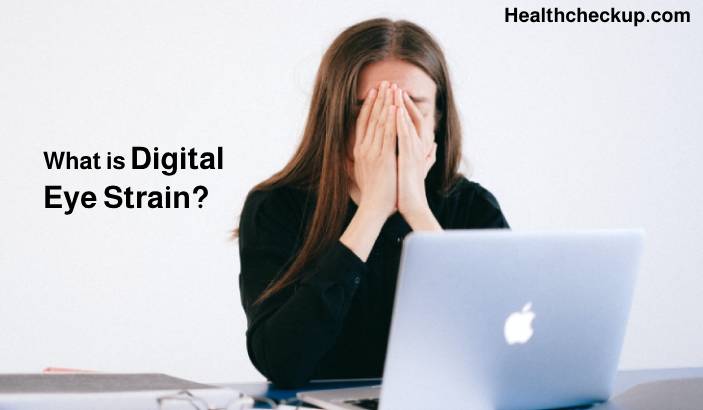In today’s increasingly digital world, many individuals spend a significant portion of their day engaged in activities that involve screens. Prolonged exposure to digital devices can lead to a condition known as digital eye strain, which encompasses a range of symptoms that affect the eyes and overall visual comfort. In this article, we will explore digital eye strain in depth, including its symptoms, causes, and potential treatments.
What is Digital Eye Strain?
Digital eye strain, also referred to as computer vision syndrome, is a condition that arises from prolonged screen usage. It is characterized by a variety of symptoms that can impact visual comfort and overall well-being.
Symptoms of Digital Eye Strain
- Eye Discomfort: The most common symptom is eye discomfort, including dryness, itching, burning, or a feeling of grittiness.
- Blurred Vision: Extended screen time can cause temporary blurred vision, making it difficult to focus on objects both near and far.
- Eye Fatigue: Strained eyes may experience fatigue and a sensation of heaviness, often accompanied by headaches.
- Eye Redness: The eyes may appear red or bloodshot due to extended periods of screen use.
- Light Sensitivity: Increased sensitivity to light, known as photophobia, is another symptom commonly associated with digital eye strain.
- Neck and Shoulder Pain: Poor posture while using digital devices can contribute to neck and shoulder discomfort, which can intensify eye strain.
Causes of Digital Eye Strain
Several factors contribute to the development of digital eye strain:
- Prolonged Screen Usage: Spending prolonged periods staring at digital screens without breaks can lead to eye fatigue and strain.
- Blue Light Exposure: Digital screens emit blue light, which can disrupt sleep patterns, cause eye strain, and potentially damage the retina over time.
- Reduced Blinking: When focusing intently on screens, individuals tend to blink less frequently, leading to dryness and irritation.
- Screen Glare and Reflections: Poor lighting conditions and screen reflections can cause eye strain as the eyes struggle to adapt to varying contrasts.
- Poor Ergonomics: An improper workstation setup, including inadequate monitor positioning, chair height, and desk setup, can contribute to eye strain.
Treatment and Prevention
Fortunately, there are several effective strategies for treating and preventing digital eye strain:
- Follow the 20-20-20 Rule: Every 20 minutes, take a 20-second break and look at an object situated 20 feet away. This practice helps reduce eye strain and gives the eyes a chance to relax and refocus.
- Adjust Screen Settings: Optimize your screen’s brightness, contrast, and color temperature to a level that is comfortable for your eyes. Lowering blue light emissions through settings or blue light filters can also be beneficial.
- Take Regular Breaks: Incorporate frequent breaks into your screen time routine. Use these breaks to stretch, look away from the screen, and perform simple eye exercises to alleviate strain.
- Blink Regularly: Make a conscious effort to blink frequently while using digital devices. Blinking helps lubricate the eyes and reduce dryness and irritation.
- Maintain Good Posture: Sit in an ergonomic position with proper chair height, desk setup, and monitor positioning to minimize strain on the eyes, neck, and shoulders.
- Reduce Screen Glare: Position screens to minimize glare and reflections. Adjust ambient lighting or use anti-glare screen filters to reduce the impact of glare on the eyes.
- Use Artificial Tears: Over-the-counter lubricating eye drops can help relieve dryness and provide temporary relief from digital eye strain symptoms. Consult with an eye care professional for suitable options.
- Limit Screen Time Before Bed: Excessive screen usage before bedtime can disrupt sleep patterns. Minimize exposure to screens at least one hour before sleep to promote better rest and eye recovery.
- Regular Eye Exams: Schedule routine eye examinations to monitor and address any underlying eye conditions contributing to digital eye strain. An eye care professional can provide personalized recommendations for treatment and prevention.
Conclusion
Digital eye strain is a prevalent condition affecting many individuals in our technology-driven society. By understanding the symptoms, causes, and treatment options, we can take proactive steps to prevent and alleviate the discomfort associated with prolonged screen usage. Implementing strategies such as taking regular breaks, adjusting screen settings, maintaining good posture, and practicing proper eye care can significantly reduce digital eye strain’s impact on our visual well-being. Remember, prioritizing your eye health is essential for a comfortable and productive digital experience.








